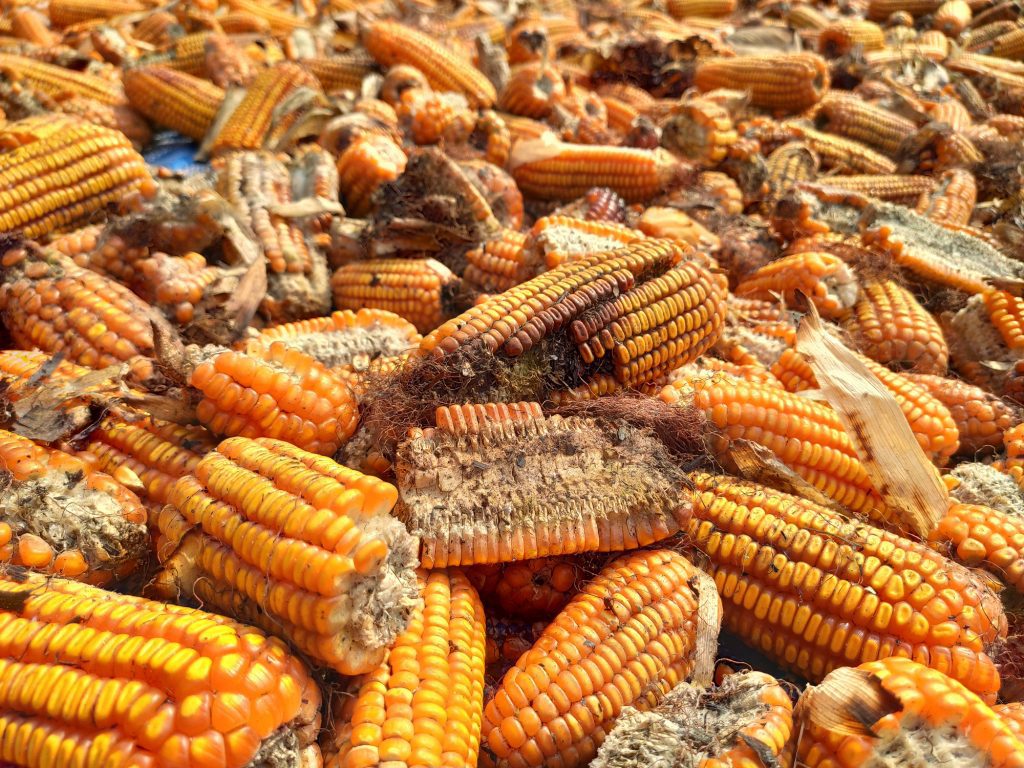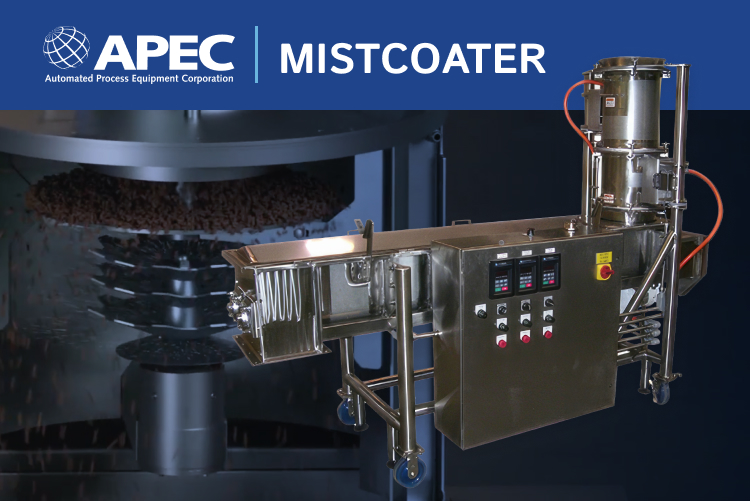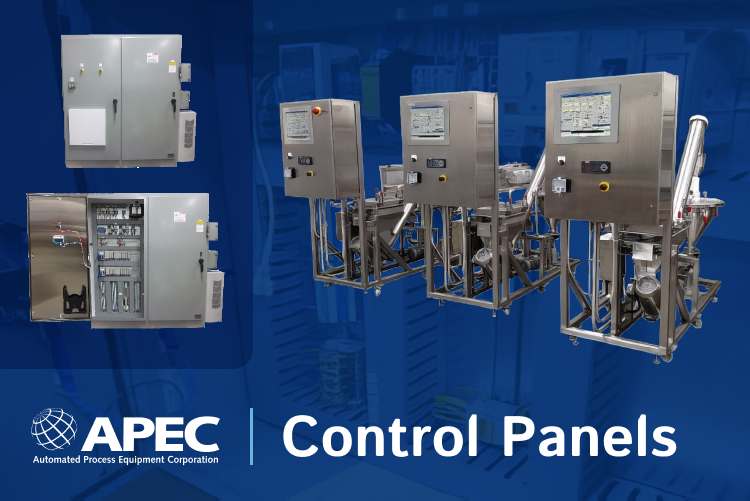
Mycotoxins proliferate in grains and seeds, creating hazards for both human and animal consumption. Aflatoxins are among the most dangerous mycotoxins, and are most problematic for grain and feed mills. Mycotoxins thrive in hot, humid conditions. With temperatures steadily increasing around the globe and heavy rainfall becoming increasingly problematic in some areas, mycotoxin growth is also becoming increasingly problematic. To control mycotoxins in feed, testing and proper storage are essential.
Dangers of Mycotoxins
Mycotoxins are naturally created by many different types of molds. These fungi and the toxins they create can proliferate on a wide variety of foodstuffs, including cereals, nuts, spices and grains, both for human and animal consumption. One of the most toxic mycotoxins, aflatoxins, is produced by two types of mold, Aspergillus flavus and Aspergillus parasiticus. These are highly dangerous for both humans and animals. Ingesting aflatoxins in high enough levels can cause a long list of problems from nausea and vomiting to convulsions and cirrhosis to cancer and death. Animals that ingest aflatoxins can spread the toxins to humans through their milk.
Mycotoxins, including aflatoxins as well as umonisin, deoxynivalenol (DON), ochratoxin (OT), and zearalenone (ZEN), generally proliferate in hot, wet environments. When plants are stressed or damaged from excessive heat or pests, they’re more vulnerable to fungi and, therefore, to mycotoxins. Controlling mycotoxins in feed starts with the right harvest techniques, which are often out of the control of feed mills. However, proper testing as well as storage can help to prevent contaminated grain from entering the feed.
How to Control Mycotoxins in Feed
Testing at Receiving
A small amount of contaminated corn or grain can quickly contaminate an entire batch. If the grain is not stored and dried properly after it’s harvested, the rotting material can produce aflatoxins in as little as 24 hours. This means the grain may appear uncontaminated when it’s shipped, but reach your feed mill with dangerous mycotoxins.
There are many types of tests to detect the presence of mycotoxins and fungi in corn, grains and other materials. Since mycotoxins can contaminate one particularly wet portion of the shipment and the rest of the shipment may appear normal, it’s important to test thoroughly, and take multiple tests. ELISA (enzyme-linked immunity stimulated assays) and gas chromatography tests can detect aflatoxins at 10 ppb or more. A black light will also show the presence of fungi; fungal spores will appear bright yellow-green under a blacklight. Though this won’t definitively show the presence of mycotoxins, it’s a good indicator that more testing is needed.
Without proper testing, it’s difficult to know if the grain you’re using is high-quality. Worse, if contamination occurs, it’s difficult to trace back to the source. Automated systems within your feed mill can automatically prompt employees to conduct mycotoxin and aflatoxin tests. Though this won’t guarantee testing, it’s more difficult to forget or ignore the tests when safeguards exist.
Clean and Maintain Storage Areas
As previously mentioned, mycotoxins thrive in damp environments and proliferate on damaged grains. The fungi can also spread quickly to uncontaminated grains. This means that proper storage is critical to control mycotoxins in feed mills. This starts with proper cleaning. The silo or storage area should be clean and dry prior to receiving.
Proper maintenance is also important; ensure that the storage bins or silos are structurally sound and there are no entry points for pests or moisture. Make repairs or replace the bins where necessary. Keep the surrounding area free of loose grain that might attract pests and areas where pests might hide. This will help to keep pests away from the storage area to begin with. Treatment with approved insecticides or fungicides can help to reduce the risk of pests or inhibit the growth of mycotoxins, though this must be done with care, so the chemicals don’t contaminate the feed in other ways. Finally, any cooling or drying equipment should also be regularly inspected and cleaned, to ensure all equipment is in full working order.
Good manufacturing practices can help to prevent storage equipment and processing equipment from breaking down prematurely. Reliable manufacturing can also help to prevent seams or cracks that can harbor fungal spores and bacteria. If your equipment is in need of replacement or repair, work with an expert that understands the needs and demands of your feed mill.
Maintaining a Cool, Dry Environment
Maintaining a cool, dry environment is one of the best ways to control mycotoxins in feed mills. This will help to prevent mycotoxins from growing in the first place, and prevent them from spreading if they are present. The moisture levels should be below 12 to 13%, and the grain should be kept at a cool 60°F. Aeration fans can help to maintain these levels in large storage areas when environmental conditions don’t cooperate.
If stored grains sit for long periods on-site, it’s essential to have well-maintained equipment and a well-maintained space for storing. Using the shipment quickly and coordinating machines to prevent long storage times is another way to prevent mycotoxins from growing. Take a close look at your facility and see how you might use testing and storage to detect and prevent mycotoxins, or how you might increase machine efficiency to prevent long storage times. To learn more about feed mill automation and the potential to speed up your process, talk to a feed mill automation expert.







